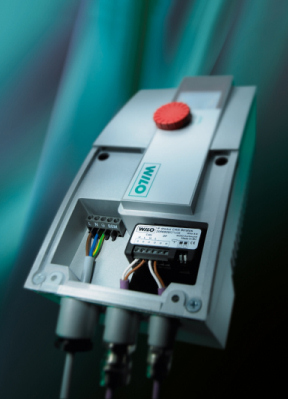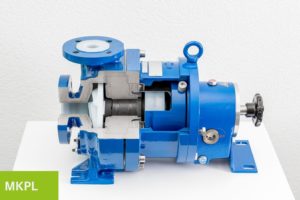New High-Speed Bus “Wilo-CAN”
By developing a “Wilo-CAN” Bus, the Dortmund-based pump expert WILO AG set a new standard for the integration of electronically controlled pumps into building automation.

“Wilo-CAN” Bus
The increasing complexity and functionality of automation systems require ever faster and more powerful bus systems. The new “Wilo-CAN” Bus has a transmission speed of 125 kBit/s which makes it up to 100 times faster than conventional systems. Even if signals change quickly, a safe transmission of data is guaranteed. The functions and performance have also been significantly improved.
On the pump side, the integration into building automation is carried out by means of an IF-Module. “Wilo-Stratos” high-efficiency pumps are the first pumps to be modified into CAN-Bus-capable versions. The applied CAN technology already had excellent performance in the automotive sector and in industry automation and from now on, it is also available for building automation. In contrast to other systems available today it offers significant cost advantages. This is especially due to the network topology which can be constructed in a line structure, i.e. all devices are connected in parallel to a central line. Wiring, material and work expenses are significantly reduced because a star-shaped wiring is not needed anymore. Further savings can be achieved because this structure requires less components. Moreover, the device is extremely fail-safe and insensitive to EMC influences.
The “Wilo-CAN” Bus is an open system and can therefore be combined with components from different manufacturers. Moreover, interfaces to other networks are possible, like e. g. BACnet, Ethernet, EIB, KNX, LON, DALI or ProfiBus. The system also facilitates the connection of CAN-capable controllers, sensors and other components. The CAN-Bus works by the multi-master principle which means that all switchgears have master functions and are addressed equally. Alternatively, the CAN-Bus can be operated by the master-slave principle.
The “Wilo-CAN” Bus technology allows the connection of up to 127 pumps to a CAN-Bus line. The individual pumps are initially addressed by means of the famous Wilo Red Button technology which is shown on the pump’s display. Any other parameters required for pump operation can be set, modified or called in this way. Moreover, the Bus module has a newly developed infrared interface for a quick data exchange with the “Wilo-IR-Module” for commercially available PDA. Numerous new data points were defined for the communication between the pump and building automation. These include the periods for pump kick or pump cycling, operating and fault signals as well as an extensive histogram for collecting and administering the pump’s operating data.
Moreover, the “Wilo-CAN” Bus offers additional functions like the option to select between the operating mode “Heating” (HV) or “Cooling/air-conditioning” (AC), which differ in terms of their deactivation behaviour in the event of faults. In the operating mode “Heating”, faults are processed “tolerantly”, i.e. only after a fault has occurred several times. In many cooling and air-conditioning applications however, the installation safety requires that the pump is switched off after the fault occurred for the first time. A special menu item is now provided for this particular case in order to deactivate the “fault-tolerant deactivation matrix”. The menu item “Units” is also new. Here you can select if the values are to be displayed in ISO units or US units.
Source: WILO SE


